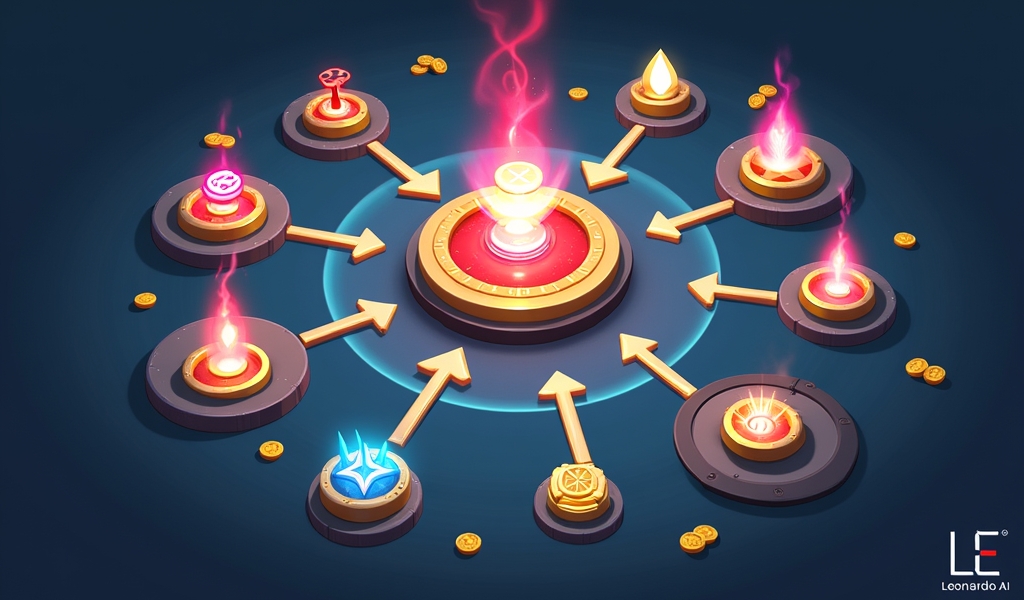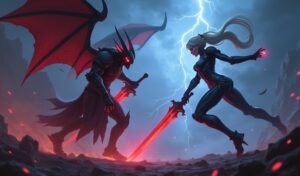Overview
Adapting builds in League is a critical professional strategy that differentiates between victory and defeat, as even the most skilled players recognize that rigid item paths limit their effectiveness in dynamic game situations. By implementing five key adaptive building strategies—understanding fundamentals, reading game state, counter-building against threats, timing power spikes, and adapting to team needs—players can gain a significant competitive advantage and climb the ranked ladder more effectively.
Table of Contents
In the ever-evolving world of League of Legends, adapting builds in League can be the difference between victory and defeat. Even the most mechanically gifted players understand that rigid item paths often lead to missed opportunities. Pro players consistently demonstrate the power of flexible building, adjusting their purchases based on game state, enemy composition, and evolving win conditions.
This guide breaks down five professional strategies that can help you master the art of adaptive building. By understanding when and how to pivot your item choices, you’ll gain a significant edge in your matches and climb the ranked ladder more effectively.
Understanding Adaptive Building: The Foundation of Pro Play
Adaptive building in League of Legends means making strategic item choices based on the current game situation rather than following cookie-cutter builds. This approach has become a cornerstone of professional play for good reason: League’s dynamic nature demands flexibility.
The core concept is simple – instead of memorizing static builds, you develop a decision-making framework that helps you select the right items at the right time. This mindset shift is what separates climbing players from those who plateau.
When watching professional games, you’ll notice that even when playing the same champion repeatedly, pros rarely build identical items. They’re constantly adapting builds in League matches based on enemy composition, game tempo, and their team’s needs.
For example, a pro ADC might rush Immortal Shieldbow against heavy burst damage, but opt for Kraken Slayer when facing multiple tanks. These decisions aren’t random—they’re calculated responses to specific game conditions.
To begin mastering adaptive building, start by understanding your champion’s core items and then learn situational alternatives. Most champions have 2-3 “must-have” items, with the remaining slots being flexible response options. Improving your decision-making skills with items follows the same principles as other strategic choices in League.

Counter-Building: Responding to Enemy Threats
Counter-building is perhaps the most obvious application of adapting builds in League. This strategy involves directly responding to enemy champions who pose the greatest threat to you or your team.
The key to effective counter-building is identifying which enemies are most problematic. Is the enemy Yasuo getting fed? Consider armor items like Plated Steelcaps or Thornmail. Is their Vladimir becoming unstoppable? Morellonomicon or Mortal Reminder might be essential to reduce his healing.
Here’s a quick reference guide for common counter-building scenarios:
- Against heavy AD: Armor items like Thornmail, Randuin’s Omen, or Death’s Dance
- Against heavy AP: Magic resistance items like Force of Nature, Spirit Visage, or Maw of Malmortius
- Against healing: Grievous Wounds from Morellonomicon, Mortal Reminder, or Chempunk Chainsword
- Against tanks: Percent health damage or penetration items like Lord Dominik’s Regards, Void Staff, or Liandry’s Anguish
- Against assassins: Defensive items like Zhonya’s Hourglass, Guardian Angel, or Crown of the Shattered Queen
Remember that champion matchups like Aatrox vs Darius often hinge on smart item choices that counter specific threats. Watching how professional players adapt their builds against certain champions can provide valuable insights.
One common mistake is buying counter items too late. If you’re laning against a healing-heavy champion like Aatrox or Soraka, getting an early Executioner’s Calling or Oblivion Orb before completing your mythic can completely change the lane dynamic. The 800 gold investment could save you thousands in lost objective bounties and map pressure.
As League’s champion roster continues to grow, learning to counter-build effectively becomes increasingly important. Keep in mind that some counter items may delay your power spikes, so you’ll need to weigh the trade-off between countering a specific threat and accelerating your own power curve.
Power Spike Timing: Accelerating or Delaying Key Items
Understanding power spike timing is crucial when adapting builds in League. A power spike is when your champion experiences a significant jump in strength, usually after completing an important item. Knowing when to accelerate toward a power spike or delay it for a more situational item can dramatically impact your game influence.
When ahead, consider accelerating your build path toward your biggest power spike items. For example, if you’re a fed Irelia, rushing Blade of the Ruined King into Trinity Force will help you snowball your advantage and improve your mid-late game shotcalling opportunities.
Conversely, when behind, you might need to pivot to cheaper, more efficient items that provide immediate value. A behind ADC might opt for Infinity Edge components before completing their mythic to reach damage thresholds faster.
Component purchases are often overlooked by average players but are utilized masterfully by pros. Sometimes buying a Stopwatch, Executioner’s Calling, or Verdant Barrier before completing a full item can be game-changing. This is especially true before important objective fights around dragon or baron control.
Remember these principles when timing your power spikes:
- Identify your champion’s strongest power spike items (usually mythic or legendary items)
- Consider the game state (ahead, even, behind) when deciding build order
- Recognize upcoming objectives and buy accordingly (component items can be stronger than saving for a completed item)
- Track enemy power spikes and adjust your build to counter or avoid fighting during their strongest moments
As top League players suggest, understanding the timing of your power spikes relative to the enemy team’s can give you a significant competitive advantage and help you determine when to force engagements or play defensively.
Role Adaptation: Shifting Your Build for Team Needs

Analyzing Success: Reviewing Your Adaptive Building Decisions
The final professional strategy for adapting builds in League is systematically analyzing your building decisions after each game. This reflective process helps cement good habits and identify areas for improvement.
After matches, ask yourself these critical questions about your item choices:
- Did my build address the most significant threats on the enemy team?
- Were there moments when a different item would have given me more value?
- Did I time my purchases well in relation to important objectives?
- How did my build complement my team’s composition and needs?
- Were there any items I built that didn’t provide sufficient value?
Tools like the post-game damage breakdown can provide insights into whether your defensive or offensive itemization was appropriate. For example, if you built heavy magic resistance but physical damage was your main cause of death, you’ve identified a clear opportunity for improvement.
Consider keeping a small journal of builds that worked particularly well in specific scenarios. This personalized reference will help you improve your macro play and build decisions over time, giving you an edge in similar future matchups.
Effective team fighting often comes down to having the right items at the right time. By reviewing your successes and failures in this area, you’ll develop a stronger intuition for adaptive building.
Many pro players also watch their own replays specifically focusing on item timing and the impact of their build choices. This practice helps them refine their understanding of how different items affect their champion’s performance in various scenarios.
Remember that adapting builds in League is an ongoing learning process. Even the best players continuously refine their item knowledge as the game evolves through patches and meta shifts. Being willing to critically analyze your choices is what separates players who consistently climb from those who stagnate.
Conclusion
Mastering the art of adapting builds in League is a journey that requires game knowledge, situational awareness, and willingness to break from comfort zones. The five professional strategies we’ve covered—understanding adaptive building fundamentals, reading game state, counter-building, timing power spikes, and adapting to team needs—provide a comprehensive framework for making smarter item decisions in every match.
Remember that flexibility is your greatest asset. The players who climb most consistently aren’t those who rigidly follow recommended builds but those who understand when and why to deviate from them. Your ability to assess each unique game and make appropriate build adjustments will set you apart from opponents who build the same items regardless of circumstances.
As you implement these strategies, you’ll notice your win rate climbing alongside your wave management skills and mechanical execution. Adapting builds in League isn’t just about items—it’s about developing a winner’s mindset that responds intelligently to challenges instead of blindly following formulas.
Start small by focusing on one aspect of adaptive building at a time, and soon you’ll find yourself making instinctive item decisions that give you the perfect edge in every situation. The Rift rewards those who adapt—so build smarter, climb higher, and dominate your matches like the pros.
Frequently Asked Questions
How often should I change my build during a League match?
You should adjust your build whenever significant changes occur in the match, such as an enemy carry getting fed, a specific damage type becoming dominant, or your team needing you to fulfill a different role. Most high-ranked players make at least 2-3 adaptive building decisions per game.
Should I always finish a core item before starting a situational one?
Not necessarily. Sometimes purchasing components of situational items (like Executioner’s Calling for anti-healing) before completing your core items can provide immediate value against specific threats. Evaluate the urgency of the situation and act accordingly.
How do I know which items to prioritize when adapting my build?
Identify the biggest threats to your survival or the largest obstacles to your team’s victory, and prioritize items that address those issues. Pay attention to which enemies are fed, what type of damage is hurting your team most, and which objectives are currently contested.
Can adapting my build make up for being mechanically outplayed?
Smart itemization can definitely help bridge skill gaps by giving you statistical advantages that compensate for mechanical differences. A perfectly adapted build can sometimes allow you to win trades and fights against mechanically superior opponents who built suboptimally.
How do I balance damage and defensive items when adapting my build?
The general rule is to build as offensively as you can get away with while still surviving long enough to fulfill your role. Pay attention to whether you’re dying before using your abilities/damage in fights; if so, you likely need more defensive items, but if you survive fights with plenty of health remaining, you can probably afford more offensive items.




